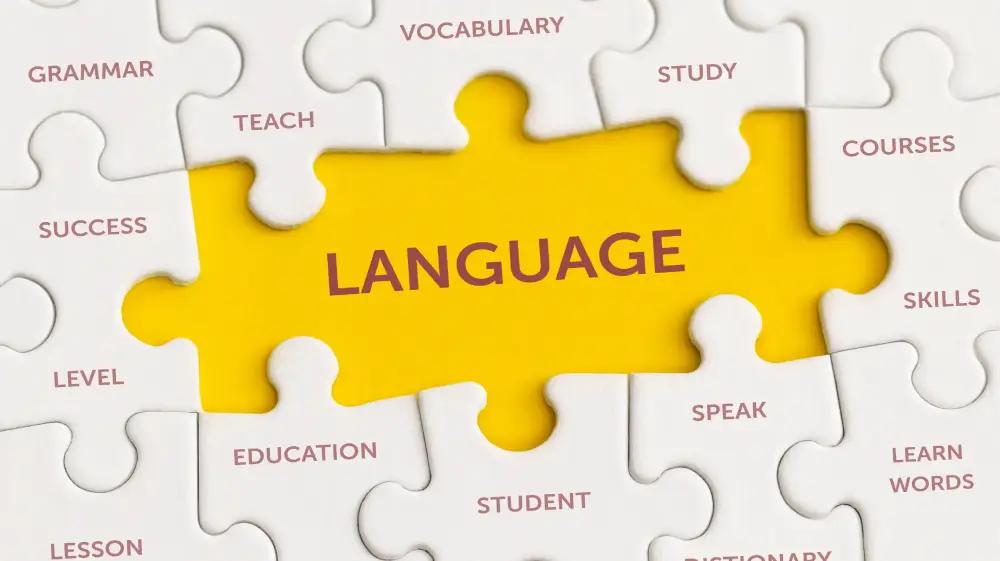Summary
Interlingual translation is the process of conveying the source text from one language into another. Other types of translation include intralingual translation and intersemiotic translation. Also, there is interlingual machine translation, which is a classic approach to machine translation. Translation is not always interlingual as one can identify other types of translation as well.
What is interlingual translation?
Interlingual translation or what some call proper translation is the translation or interpretation of a verbal sign of the source language by means of another language. It is considered to be one of the oldest types of translation. Just like the simple term “translation”, interlingual translation typically means the process of conveying texts and contents from one language into another.
“Inter” means “between” and “lingual” means “relating to language or speech”. Therefore, the term “interlingual” followed by “translation” refers to the transformation of contents from one language to another, since “interlingual” means “between or relating to two languages”.
Interlingual translation is usually done by professional interlingual translators who master both the source and the target language. They must know all there is to know about grammar, punctuation, spelling, and writing styles, along with cultural differences.
It takes years to study interlingual translation and it also needs personal efforts to be able to successfully become an interlingual translator.
Interlingual translators get to choose the languages they wish to translate from and into. This usually includes their mother language and some other languages that they study. The bare minimum is two languages, including the mother language of translators.
Get our translation and writing services now
Interlingual machine translation
Interlingual machine translation is considered to be a classic approach to machine translation. In the interlingual machine translation, the source language is conveyed into what is called an “interlingua” which means an abstract language-independent representation. The interlingua then generates the target language.
The interlingual approach is considered to be an alternative to the transfer approach and the direct approach.
In the transfer approach, the source language is conveyed in an abstract which is a language-independent representation. The linguistic rules that are specific to the language pair convey the source language representation into the target language representation that is abstract. This then generates the target sentence.
On the other hand, the direct approach consists of the translation process of words, but directly and without the process of passing through further representation.
Just like anything else, interlingual machine translation has its own advantages and disadvantages. The advantages are that it doesn’t require many components to be able to relate the source language to the target language. Therefore, it requires very few components to be able to add new languages. Also, it supports the paraphrasing of the input in the source language and it can even handle languages that aren’t at all similar such as Arabic and Japanese. Nonetheless, the disadvantage is that interlingual machine translation is for a specific domain and it is very difficult for a wider domain.
Get our localization services now
Unraveling the Linguistic Enigma: Why Is Arabic Language Hard to Learn?
What is interlingual subtitling?
Subtitling means the translation of audible content from the source language into the target language. Subtitles are usually written translation of audiovisual content that appears at the bottom of the screen. It allows foreigners who do not understand the spoken language to understand what is being said.
Interlingual subtitling, as the name indicates, means the transformation of audible content from the source language into the target language.
Interlingual subtitling can be used for all types of audiovisual files such as documentaries, videos, movies, series, ads, podcasts, songs, tutorials, and more. Subtitles usually target individuals who are unable to understand the source language. That is why they are widely seen and nowadays, most audiovisual files are displayed with subtitles at the bottom to make it possible for everyone to understand what is being said.
Interlingual subtitles have many benefits, such as reaching a wider audience and making it possible for everyone to follow what is being said. They also come in handy when it comes to the deaf and hard of hearing who wish to watch or listen to certain audiovisual content that is originally in another language they don’t understand.
Get our subtitling and captions translation now
What are the three types of translation?
As translation means the transformation of a text from one language into another, there are several types one can identify. These types are intralingual translation, interlingual translation, and intersemiotic translation.
-
Intralingual translation:
Intralingual translation is the process in which the translation is within the same language. It can typically involve paraphrase or rewording.
-
Interlingual translation:
Interlingual translation is the process of translation from the source language into the target language.
-
Intersemiotic translation:
Intersemiotic translation means the translation of a verbal sign by a non-verbal sign such as an image or music.
Subtitling Made Simple: Tips and Techniques for Learning
Intralingual translation VS interlingual translation
While translation typically means the transformation of texts or contents from one language into another, it has different types that might mean otherwise.
Intralingual translation means the interpretation of a verbal sign by means of other signs but of the same language. It is not translated into another language. It typically revolves around paraphrasing or rewording.
Whereas interlingual translation means the interpretation of a verbal sign by means of another language. This means that it is the transformation of a message from the source language into the target language.
Therefore, intralingual translation and interlingual translation do not mean the same thing; the outcomes of the first are in the source language whereas the outcomes of the second one are in the target language.
Perfecting the Art: Qualifications for Professional Proofreader
Can translation only be interlingual?
As mentioned before, interlingual translation means the process of conveying a message from the source language into the target language. However, it has been mentioned that translation can have other types, and can therefore be other than interlingual.
Translation can also be intralingual and intersemiotic:
Intralingual means the interpretation of a message by means of other verbal signs of the same language. This means that technically, there is no target language.
Intersemiotic translation means the translation of a verbal sign by another non-verbal sign such as an image, music, or other semiotic resources.
Beyond Subtitles: Exploring the Various Types of Audiovisual Translation
What are the qualifications of an interlingual translator?
To be a successful interlingual translator, translators must have certain qualifications and skills. These qualifications typically include:
- Bachelor's Degree in Arts in Translation.
- Deep knowledge of both the source and the target language in terms of cultural differences, history, preferences, traditions, customs, and more.
- Ability to write in both the source and the target language correctly and without committing minor mistakes.
- Analytical skills since translation transcend the simple process of conveying words from one language into another.
- Responsiveness because they will need to totally understand what they are asked and they need to be easy-going.
- Strong verbal and communication skills.
- Strong attention to detail.
- Ability to work under pressure and tight deadlines.
- Time management skills to be able to work on several projects at the same time, all while delivering them on time.
- Strong research skills since translation require thorough research.
- Ability to accurately convey the meaning from one language into another.
- Computer literacy and ability to use technology and computer programs.
- Excellent writing skills in both the source and the target language.
- Fast, to be able to work on several projects at the same time and to be able to deliver work on time.
Get our transcreation services now
Are there some words that can’t be translated?
Translators face all kinds of problems. One of the problems they might face is untranslatable words or expressions. This means that a certain word or a certain expression in the source language does not have an equivalent word or expression to it in the target language. This problem is very common, especially between languages that are very different such as Arabic and English, Japanese and French, and Chinese and Turkish.
In this case, translators are always called to use their analytical skills to be able to find a proper solution that fixes this problem. Untranslatable words or expressions can be replaced by an explanation in the target language that is very close to the meaning of the words or expressions in the source language. This is one of the ways that guarantee that the meaning is preserved and that the difference between the source and the target language is not obvious.
It is important to mention that only professional translators with many years of experience know how to overcome such challenges.
Get a quote now and let our translators bridge the gap between languages!
Interlingual translation and writing style
Some might consider that translating from one language into another does not require specific writing skills as the information is already there and all translators have to do is convey the meaning as is.
However, this is not totally true. Translators are considered writers who have to convey the meaning from one language into another in a way that suits the target audience. Not only that, but translation is very similar to writing as translators have to write the ideas in a certain language. For that reason, translators must have a writing style that can be very different from the style of the source language, unless told otherwise. This means that in the majority of cases, translators can write in their own style as long as the information is preserved and the translation is accurate.
Some even refer to translators as writers. Interlingual translation must be completed in a way that is natural and the more the target text does not look translated, the better.
Translators are not called to be traitors, but they are called to be “writers” who have their own writing styles.
Going Global: A Complete Guide to Localization in Translation
What does “fidelity” mean in translation?
“Traduttori traditori”, is what Giuseppe Giusti said back in the nineteenth century. The literal translation of this is “translators traitors”. This means that according to him, translation is not faithful to the source text nor to the original author.
“Fidelity” in translation is staying loyal and faithful to the source text and to the author, without having to change the perspective, points of view, or other important factors. Many indeed believe that translators are traitors since the simple fact that one is conveying a text from one language into another is an act of betrayal. That is why many believe that literal translation or word-for-word translation must always be the go-to option since it is the only way that guarantees faithfulness.
However, others believe that as long as the purpose of the source text is preserved and the target text does not contain any modifications in terms of points of view, perspective, and information, then the translation is not considered to be unfaithful. Thus, translators are not traitors.
It all comes down to the importance of accuracy, as translation has become an integral part of our everyday life. That said, as long as the translation is accurate, translators can be referred to as faithful.
Upload your file now and watch it seamlessly transform into any language of your choice!






